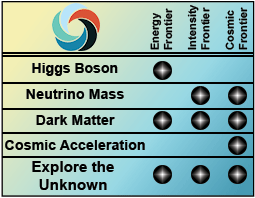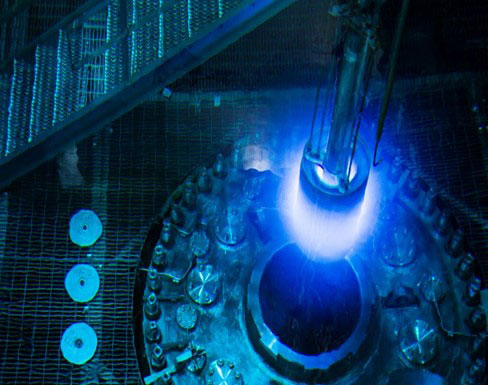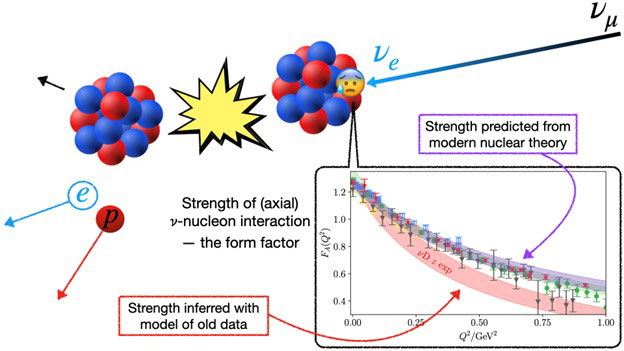Research
Research supported by the Office of High Energy Physics (HEP) is motivated by five Science Drivers of Particle Physics:

- Use the Higgs Boson as a new tool for discovery
- Pursue the physics associated with neutrino mass
- Identify the new physics of dark matter
- Understand cosmic acceleration: dark energy and inflation
- Explore the unknown: new particles, interactions and physical principles
The science drivers provide compelling lines of inquiry that show great promise for discovery. The HEP program enables scientific discovery through a strategy organized along three interrelated frontiers of particle physics. Frontier research is supported by a vibrant theory program and is enabled by Advanced Technology R&D. In addition, investments in accelerator technology are made available to U.S. science and industry through the Accelerator Stewardship program.
HEP Research Subprograms
Energy Frontier researchers accelerate particles to the highest-energies ever made by humanity and collide them to produce and study the fundamental constituents of matter and the architecture of the universe. Sophisticated detectors, some the size of apartment buildings, observe the newly produced particles, providing insight into the fundamental interactions and the conditions of the early universe.
Intensity Frontier researchers use a combination of intense particle beams and highly sensitive detectors to make extremely precise measurements of particle properties, study some of the rarest particle interactions predicted by the Standard Model of particle physics, and search for new physics. Although neutrinos are ubiquitous in the universe, they are elusive and require populous beams and vast detectors to observe. Measurements of the mass and other properties of neutrinos may have profound consequences for understanding the evolution of the universe.
Cosmic Frontier researchers seek to reveal the nature of dark matter and dark energy by using particles from space to explore new phenomena. The highest-energy particles ever observed have come from cosmic sources, and the ancient light from distant galaxies allows the distribution of dark matter to be mapped and perhaps the nature of dark energy to be unraveled. Ultra-sensitive detectors deep underground may glimpse the dark matter wind passing through Earth. Observations of the cosmic frontier reveal a universe far stranger than ever thought possible.
Theoretical and Computational Physics provide the framework to explain experimental observations and gain a deeper understanding of nature. A thriving theory program is essential to support current experiments and identify new directions for the field. Theoretical physicists take the lead in the interpretation of a broad range of experimental results and synthesize new ideas as they search for deep connections and develop testable models. Advanced computing tools are necessary for designing, operating, and interpreting experiments while performing the computational science and simulations that enable discovery research in the three frontiers.
Advanced Technology R&D fosters fundamental research into particle acceleration and detection techniques and instrumentation. These in turn provide the enabling technologies and new research methods that can advance scientific knowledge in high energy physics and a broad range of related fields, advancing the DOE’s strategic goals for science.
Accelerator Stewardship coordinates with accelerator user communities and industrial accelerator providers to develop innovative solutions to critical problems, to the benefit of both the broader user communities and the DOE discovery science community. Accelerators are a workhorse of modern society and are used in medicine, national security, industry, and discovery science.



